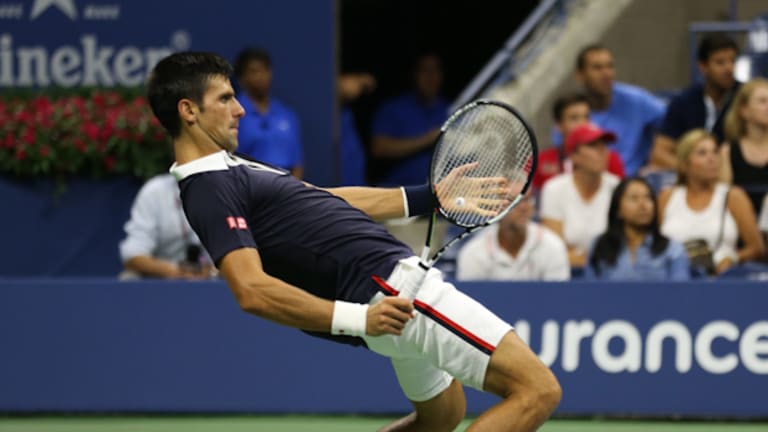NEW YORK—It was easy to see why Novak Djokovic was muttering to himself in between points, staring at his box during changeovers, and smacking his bag with his racquet. Much like Roberto Bautista Agut in the fourth round, Feliciano Lopez, the rare Spaniard who earns his keep with the first shot of each point rather than the sequence that follows it, was giving the heavy favorite all he could handle.
Djokovic had won the opening five games of his late-night quarterfinal inside muggy Arthur Ashe Stadium, but it was still hard for him to feel in control. His opponent’s serve was the most potent, game-breaking stroke between the two, which seems illogical when you consider that Djokovic is the top-ranked player in the world and is generally accepted as the best returner in the game. But Lopez’s smooth, explosive service delivery can obfuscate even a genius ground game—just ask Rafael Nadal, who the soon-to-be 34-year-old beat last month in Cincinnati.
It was a frustrating night for the world No. 1.
“Just frustrating when you drop—you play one sloppy service game in the beginning,” Djokovic said about the second set. “Was 30-Love in that game and I allowed him to break me and the set was gone.”
But it was a victorious night, as well. Djokovic has been beaten by some of the game’s top servers in the past—John Isner has upset him twice, and one of his five losses this year was courtesy of Ivo Karlovic—but he remained patient enough to allow his skill to ultimately dismiss Lopez in four sets, 6-1, 3-6, 6-3, 7-6 (2).
"It's a win in four sets against a player who is in form, playing well in Cincinnati, playing with the confidence, and winning against some top players," says Djokovic, who plays defending champion Marin Cilic next. "All in all, I'm in the semifinals. I have two days off, and hopefully will be able to get ready for the next one."
